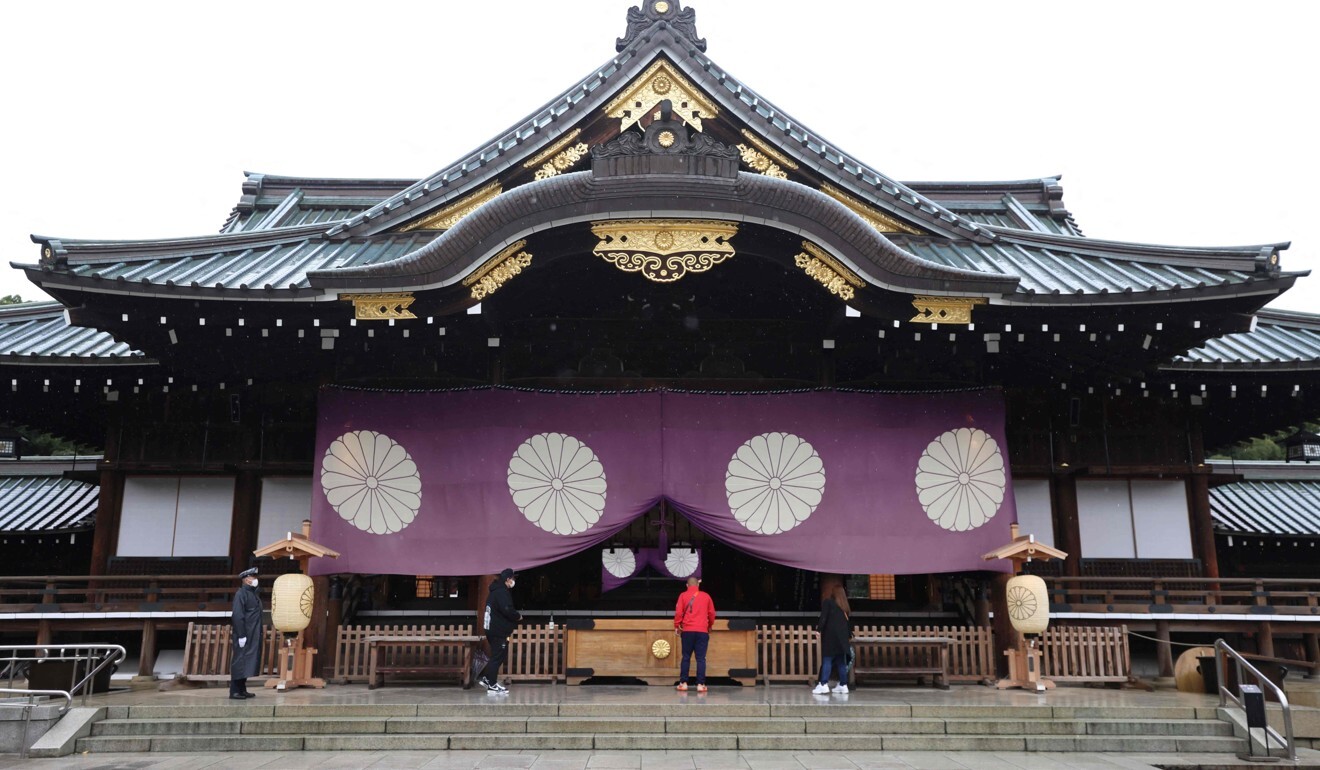
Japan’s new PM Fumio Kishida angers China, South Korea with offering to controversial Yasukuni Shrine
- The new prime minister sent a tree and does not plan to visit the Shinto shrine over its autumn festival, unlike his predecessor Yoshihide Suga
- The shrine honours Japan’s war dead and is seen by China and South Korea as a symbol of Tokyo’s past militarism
The “masakaki” tree offering was made under his name as prime minister to celebrate the shrine’s twice-yearly festival held in the spring and autumn.
Kishida, who became Japan’s prime minister on October 4, does not plan to visit the shrine during the two-day autumn festival that runs through Monday, according to people close to him.
“I came here as a former prime minister. I expressed my reverence to the spirits who gave their precious lives for the country,” Suga told reporters. He had not visited the shrine while he was prime minister.

The statement, which took the form of a commentary by a ministry spokesperson, said the government “urges the leaders of Japan to squarely face history” and “demonstrate through action” their reflection on the past.
The shrine’s precursor was built in 1869 and was renamed Yasukuni Shrine in 1879. It venerates those who died in wars fought by the Japanese government, worshipping their souls as deities.
China hits out at Japan over ministers’ Yasukuni Shrine visits
Abe’s successor Suga did not visit the shrine during his one-year tenure from September last year, and sent ritual offerings for the festivals.
Suga also did not visit the shrine when he served as chief cabinet secretary for Abe for more than seven years.
The former prime minister did not elaborate on why he did so this time when he met the press, only saying: “It was something I decided by myself.”

Kishida’s tree offering to the shrine comes at a politically delicate time in Japan. Less than two weeks after taking office, Kishida, who also heads the Liberal Democratic Party, dissolved the lower house on Thursday for a general election at the end of this month.
Among his cabinet members, Health Minister Shigeyuki Goto and Kenji Wakamiya, minister in charge of the 2025 World Exposition in Osaka, also separately sent tree offerings to the shrine.
The festivals usually run for three days, but like last year’s festivals, the autumn event has been shortened to two days as part of efforts to prevent the spread of the coronavirus.
PM Kishida tells voters only LDP can keep Japan safe from security threats
Hidehisa Otsuji, a former vice-president of the House of Councillors and who leads the group, and Toshiei Mizuochi, chairman of the steering committee of the upper house, both lawmakers of the ruling party, visited the shrine on Sunday on behalf of other members.
Most of the roughly 2.5 million people enshrined at Yasukuni were military servicemen and civilian employees of the Japanese military.
Yasukuni added wartime prime minister General Hideki Tojo and 13 other “Class-A” war criminals to the enshrined deities in 1978, stirring controversy in Japan and abroad.
Additional reporting by Bloomberg

